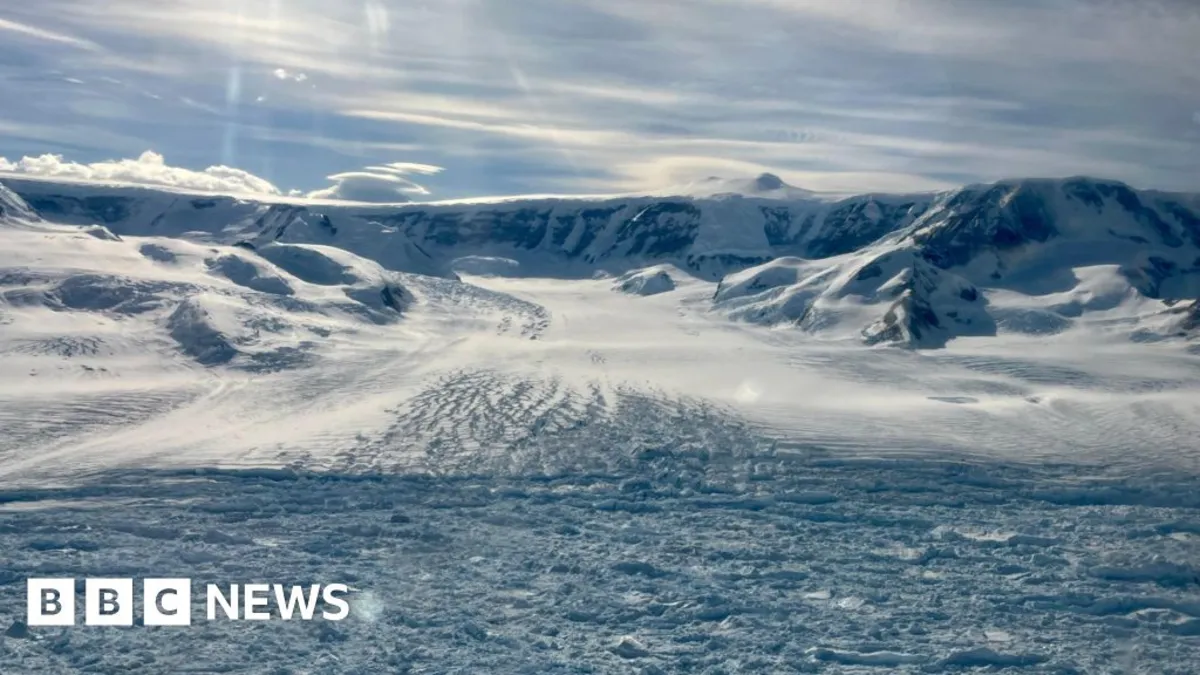
The recent rapid retreat of an Antarctic glacier has captured the attention of scientists worldwide and could be unprecedented, a new study suggests. This finding, which has major implications for future sea-level rise, focuses on the Hektoria Glacier, which retreated by more than 8 kilometers (5 miles) in just two months during late 2022.
The authors of the study propose that this could be the first modern example of a process where the front of a glacier resting on the seabed rapidly destabilizes. However, some scientists argue that this section of the glacier was actually floating in the ocean. While the changes observed are impressive, they may not be as unusual as initially thought. Floating tongues of ice, known as ice shelves, are significantly more prone to breaking up than glacier fronts that rest on the seabed due to their vulnerability to warm water erosion from below.
There is no dispute that the Hektoria Glacier has undergone substantial changes. Data from satellites reveal that its front retreated by approximately 25 kilometers (16 miles) between January 2022 and March 2023. However, deciphering the causes behind this rapid movement is akin to unraveling a mystery, according to Naomi Ochwat, the lead author of the study and a research affiliate at the University of Colorado Boulder.
The narrative traces back to 2002, when the Larsen B ice shelf in the eastern Antarctic Peninsula collapsed. This event caused the loss of about 3,250 square kilometers (1,250 square miles) of ice shelf—equivalent to the size of Cambridgeshire or Gloucestershire. The Larsen B ice shelf had been acting as a barrier, effectively holding back the Hektoria Glacier. Once it collapsed, the glacier began to accelerate and thin. However, the bay created by this loss eventually filled with sea ice anchored to the seabed, providing some stabilization to Hektoria.
The situation changed drastically in early 2022 when the sea ice began to break apart. This led to further ice loss from Hektoria's front, as large, flat-topped icebergs calved off. Although iceberg calving is a natural process in glacial behavior, the impact of anthropogenic climate change has increased the likelihood of ice shelf losses. What the authors argue is truly unprecedented occurred in late 2022 when they suggest that the glacier's front was grounded—resting on the seabed—rather than floating. Within just two months, Hektoria retreated by 8.2 kilometers, a rate nearly ten times faster than any previously recorded for a grounded glacier.
This dramatic change is attributed to an ice plain—a relatively flat area of bedrock on which the glacier lightly rests. The upward forces from ocean water could have lifted the thinning ice all at once, leading to rapid calving and retreat. According to co-author Adrian Luckman, a professor of geography at Swansea University, glaciers typically do not retreat this quickly. This rapid retreat highlights what may happen elsewhere in Antarctica where glaciers are lightly grounded and sea ice loses its grip.
The potential implications of this phenomenon are significant. Although Hektoria is a small glacier, similar events in larger areas of Antarctica could dramatically influence global sea-level rise. For instance, the Thwaites Glacier, often labeled the 'doomsday glacier,' contains enough ice to raise global sea levels by 65 centimeters (26 inches) if it were to melt entirely. Understanding whether other ice plain areas are susceptible to such rapid retreat and calving is critical, according to Dr. Ochwat.
Despite the study's compelling findings, there remains skepticism among other researchers regarding its conclusions. The primary contention centers around the location of the grounding line, or grounding zone, where the glacier transitions from resting on the seabed to floating. Dr. Frazer Christie, a glaciologist and senior Earth observation specialist at Airbus Defence and Space, notes that there is significant disagreement within the glaciological community about the precise location of Hektoria Glacier's grounding line. This uncertainty complicates the determination of whether the changes observed were genuinely unprecedented.
Dr. Christine Batchelor, a senior lecturer in physical geography at Newcastle University, emphasizes that if the portion of the ice sheet studied was indeed floating rather than grounded, the calving events would represent normal behavior for ice shelves, thus lessening the overall impact of the findings.
While the scientific community may disagree on the specifics of Hektoria's rapid retreat, there is a consensus that the fragile Antarctic region—previously thought to be largely immune to climate change—is now undergoing rapid transformations. As Dr. Anna Hogg, a professor of Earth observation at the University of Leeds, points out, the changes in polar regions are happening faster than anticipated even a decade ago. There is an urgent need for enhanced satellite data collection to monitor and understand these shifts and their implications for sea-level rise.
To stay informed on the latest developments in climate and environmental research, consider signing up for the BBC's Future Earth newsletter.